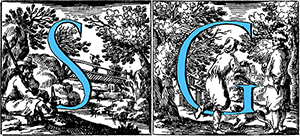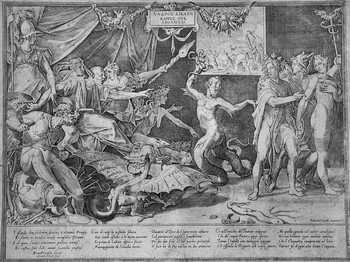
FRANCO Giacomo
(Venice 1550 – 1620)
Italian engraving and publisher born in Venice, or perhaps in Urbino, self-qualified in his will as a ‘draftsman’. He was a natural son of John the Baptist Franco ‘the Semoleo’ and a woman called Francesca of Urbino. Although he was mainly an engraver, his name is mentioned in the list of the Venetian painters’ corporation. After engraving some subjects derived from his father’s paintings in the 80’s of the 16th century, he performed translation engravings from works of Agostino Carracci, of whom he later was publisher. Also in the same period in Venice the ‘Metamorphosis of Ovid’ ….. ‘with the new figures carved in copper, by Messer Iacopo Franco huomo of appreciated value in this art’ was published. He engraved another work of remarkable artistic value: the first illustrated version of the Gerusalemme Liberata by Torquato Tasso printed in Genoa by G. Bartoli in 1590.
Since 1611 in Venice, Giacomo Franco had an own calcography called ‘At the sign of the sun’ and a bookstore. During his work as a publisher, Franco often carved copper-plates to illustrate the books that were printed at his shop. This is the case of Spiritual Garden (1608) by P. Morigi, that Franco enriched with full-page images. Perhaps, the most important work of the engraver Giacomo Franco is the illustration of the volume: ‘Habiti d’huomeni et donne venetiane con la processione della Ser.ma Signoria ed altri particolari…’. In 1611 he did his last printed work, De excellentia et nobilitate delineationis libri duo, which included anatomical studies engraved by Jacopo Palma il Giovane. This work was reprinted in 1636 by Marco Sadeler with the title Rules to learn how to draw human bodies …(see biography of Jacopo Palma).
Thus, it is likely that Franco had already abandoned the engraving activity: a print on Palma drawing with St. Carlo Borromeo and dedicated to Abbot Spini recalls the gift of sight, lost for many years and recovered through the intercession of the saint in August 1614. Six years later he was still sick, but healthy in his mind, as he himself stated in the 1620 testament.



